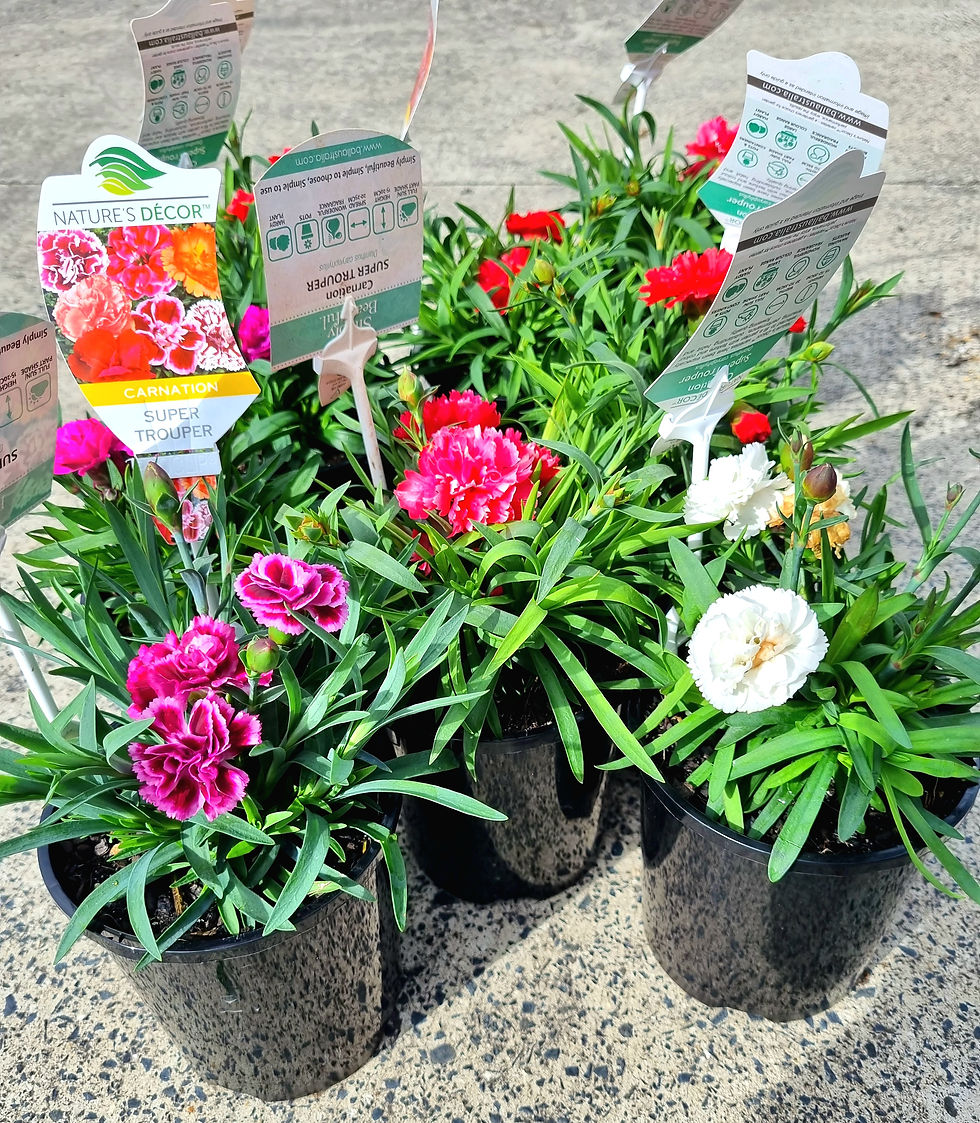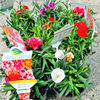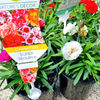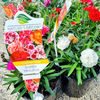Available
Price
$20
Order Place
157 Stonecutters Drive, Colebee, NSW-2761

Carnation Flower Plants (Dianthus Caryophyllus)
Carnation Flower Plants

Carnation Flower Plants
Carnation flower plants, scientifically known as Dianthus caryophyllus, are popular for their beautiful blooms and pleasant fragrance. They are widely cultivated for use in gardens, floral arrangements, and as ornamental plants. Below is an overview of their characteristics, care requirements, and popular varieties.
Characteristics
Appearance: Carnations have ruffled, layered petals that come in a variety of colors including pink, red, white, and yellow.
Height: They typically grow between 12 to 24 inches tall, depending on the variety.
Fragrance: Many carnations are known for their sweet scent, making them a favorite in bouquets.
Care Requirements
Sunlight: Carnations thrive in full sun, requiring at least 6 hours of direct sunlight per day.
Soil: They prefer well-drained, sandy or loamy soil with a pH level between 6.0 and 6.8.
Watering: Water them regularly, allowing the soil to dry out between waterings to prevent root rot.
Fertilization: Use a balanced fertilizer every 4-6 weeks during the growing season to promote healthy growth.
Popular Varieties
Standard Carnations: Classic blooms often used in floral arrangements.
Pompom Carnations: Smaller flowers with a dense, rounded shape.
Fringed Carnations: Features fringed edges on the petals for a unique appearance.
Miniature Carnations: Smaller versions that are ideal for container gardening.
Care and Maintenance of Carnation Plants
1. Soil Type
Use well-draining soil with a pH of 6.5 to 7.5. A mix of potting soil and perlite or sand can enhance drainage.
2. Watering
Water carnations regularly, allowing the top inch of soil to dry out between watering. Avoid waterlogging, as it can lead to root rot.
3. Fertilization
Feed carnations with a balanced fertilizer every 4-6 weeks during the growing season. A diluted liquid fertilizer can be beneficial.
4. Pruning
Regularly remove spent flowers to encourage new blooms. Prune back leggy growth to maintain a bushy appearance and promote airflow.
5. Temperature and Humidity
Carnations prefer cooler temperatures, ideally between 60°F to 70°F (15°C to 21°C). They can tolerate lower humidity levels but benefit from moderate humidity.
6. Winter Care
If growing carnations outdoors, provide protection during winter months. Mulching and covering with frost cloth can help them survive colder temperatures.
Common Pests and Diseases
Pests: Watch out for aphids, spider mites, and thrips.
Diseases: Carnations are susceptible to fungal diseases like gray mold and root rot, especially in overly damp conditions.
With proper care and attention, carnation flower plants can be a vibrant addition to any garden or floral display.
8. Common Problems
Yellowing Leaves: Often a sign of overwatering or nutrient deficiency.
Wilting: Can indicate underwatering or root issues.
Stunted Growth: May result from poor light conditions or nutrient shortages.
By following these care and maintenance tips, you can ensure that your carnation plants thrive and produce beautiful blooms throughout their growing season.





